-
 Bitcoin
Bitcoin $84,566.1805
-0.57% -
 Ethereum
Ethereum $1,592.2699
-0.60% -
 Tether USDt
Tether USDt $0.9999
0.00% -
 XRP
XRP $2.0827
0.05% -
 BNB
BNB $595.0697
0.54% -
 Solana
Solana $133.8668
-0.51% -
 USDC
USDC $0.9999
0.01% -
 Dogecoin
Dogecoin $0.1581
0.11% -
 TRON
TRON $0.2414
-3.25% -
 Cardano
Cardano $0.6267
0.55% -
 UNUS SED LEO
UNUS SED LEO $9.2366
2.17% -
 Chainlink
Chainlink $12.5949
0.15% -
 Avalanche
Avalanche $19.1131
-0.90% -
 Toncoin
Toncoin $3.0082
1.10% -
 Stellar
Stellar $0.2418
0.58% -
 Shiba Inu
Shiba Inu $0.0...01233
3.67% -
 Hedera
Hedera $0.1654
1.00% -
 Sui
Sui $2.1393
-0.24% -
 Bitcoin Cash
Bitcoin Cash $342.0697
2.59% -
 Litecoin
Litecoin $76.9074
1.71% -
 Polkadot
Polkadot $3.6967
1.20% -
 Hyperliquid
Hyperliquid $16.8937
0.83% -
 Dai
Dai $0.9999
-0.03% -
 Bitget Token
Bitget Token $4.3923
0.72% -
 Ethena USDe
Ethena USDe $0.9991
0.00% -
 Pi
Pi $0.6199
0.69% -
 Monero
Monero $217.2905
0.20% -
 Uniswap
Uniswap $5.1988
-0.89% -
 Pepe
Pepe $0.0...07244
-1.72% -
 OKB
OKB $50.5192
-0.32%
What is the proof of burn for blockchain?
Proof of Burn is an energy-efficient consensus mechanism where participants burn tokens to validate transactions, potentially increasing remaining tokens' value.
Apr 12, 2025 at 04:49 am
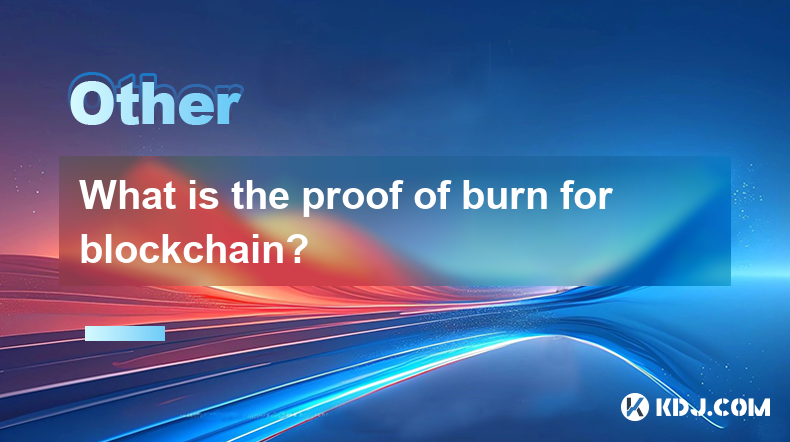
Introduction to Proof of Burn
Proof of Burn (PoB) is a consensus mechanism used in blockchain networks that serves as an alternative to more common methods like Proof of Work (PoW) and Proof of Stake (PoS). In the context of cryptocurrencies, PoB is designed to incentivize network participants to "burn" or permanently destroy a certain amount of cryptocurrency tokens in exchange for the right to validate transactions and add new blocks to the blockchain. This process aims to create a more energy-efficient and less resource-intensive system compared to PoW, which requires significant computational power.
How Proof of Burn Works
In a Proof of Burn system, participants who wish to become validators or miners must first send a specified amount of cryptocurrency to an address from which the tokens can never be retrieved, effectively "burning" them. The amount of cryptocurrency burned determines the participant's probability of being chosen to mine the next block. The more tokens a participant burns, the higher their chances of being selected.
The burning process typically involves sending the tokens to a verifiably unspendable address, often referred to as an "eater address." This address is designed in such a way that no one can access or spend the tokens sent to it, ensuring they are permanently removed from circulation.
Benefits of Proof of Burn
One of the primary advantages of Proof of Burn is its energy efficiency. Unlike Proof of Work, which requires miners to solve complex mathematical puzzles using significant computational resources, PoB does not consume large amounts of electricity. This makes it a more environmentally friendly option for blockchain networks.
Additionally, PoB can help control the supply of a cryptocurrency. By requiring participants to burn tokens, the total supply of the cryptocurrency can be reduced over time, potentially increasing the value of the remaining tokens. This mechanism can also help prevent network spam and ensure that only committed participants are involved in the validation process.
Implementing Proof of Burn
To implement Proof of Burn in a blockchain network, several steps must be followed:
- Determine the burn rate: The network must establish how many tokens need to be burned to participate in the validation process. This rate can be fixed or adjusted based on network conditions.
- Set up an eater address: A special address must be created where tokens can be sent to be burned. This address must be verifiably unspendable.
- Develop the selection algorithm: The network needs an algorithm that determines which participants get to validate transactions based on the amount of tokens they have burned.
- Integrate with the blockchain: The PoB mechanism must be integrated into the blockchain's protocol, ensuring that only participants who have burned tokens can add new blocks.
Examples of Proof of Burn in Action
Several cryptocurrencies have implemented Proof of Burn as part of their consensus mechanisms. Slimcoin was one of the first to use PoB, where participants burn Slimcoin tokens to gain the right to mine new blocks. Another example is Counterparty, which uses PoB to issue new tokens on the Bitcoin blockchain.
In the case of Slimcoin, participants burn tokens to receive a "mining power score," which determines their chances of mining the next block. The more tokens burned, the higher the score and the greater the chance of being selected. This system encourages participants to contribute to the network's security and stability.
Challenges and Considerations
While Proof of Burn offers several advantages, it also comes with its own set of challenges. One major concern is the potential for participants to burn more tokens than necessary, leading to an unnecessary reduction in the total supply of the cryptocurrency. This could result in a deflationary effect that might not be desirable for all networks.
Another consideration is the initial distribution of tokens. If the network starts with a small number of participants who burn a large amount of tokens, it could lead to centralization, where only a few participants control the validation process. To mitigate this, networks may need to implement measures to ensure a more equitable distribution of mining power.
Security Implications of Proof of Burn
The security of a Proof of Burn system relies on the integrity of the burning process and the selection algorithm. If the eater address is compromised, tokens could be retrieved, undermining the entire system. Therefore, it is crucial to ensure that the eater address is truly unspendable and that the selection algorithm is fair and transparent.
Additionally, the network must protect against potential attacks. For example, a malicious actor could attempt to burn a large number of tokens to gain control over the network. To prevent this, the network may need to implement limits on the amount of tokens that can be burned by a single participant within a certain timeframe.
Frequently Asked Questions
Q: Can Proof of Burn be combined with other consensus mechanisms?
A: Yes, Proof of Burn can be combined with other consensus mechanisms to create hybrid systems. For example, a network could use PoB to determine the initial set of validators and then use Proof of Stake to maintain the network's security over time.
Q: How does Proof of Burn affect the value of a cryptocurrency?
A: Proof of Burn can potentially increase the value of a cryptocurrency by reducing its total supply. However, the impact on value depends on various factors, including the rate of burning and the overall demand for the cryptocurrency.
Q: Is Proof of Burn suitable for all types of blockchain networks?
A: Proof of Burn may not be suitable for all types of blockchain networks. It is most effective in networks where energy efficiency and supply control are priorities. Networks that require high transaction throughput or have different security needs might find other consensus mechanisms more appropriate.
Q: How can participants recover their investment in a Proof of Burn system?
A: Participants in a Proof of Burn system cannot recover the tokens they burn, as they are permanently removed from circulation. However, they can earn rewards by validating transactions and adding new blocks to the blockchain, which can offset their initial investment.
Disclaimer:info@kdj.com
The information provided is not trading advice. kdj.com does not assume any responsibility for any investments made based on the information provided in this article. Cryptocurrencies are highly volatile and it is highly recommended that you invest with caution after thorough research!
If you believe that the content used on this website infringes your copyright, please contact us immediately (info@kdj.com) and we will delete it promptly.
- Oregon AG Sues Coinbase Over Token Sales
- 2025-04-19 03:20:13
- Bank of America Is Attempting to Monopolize the Stablecoin Market
- 2025-04-19 03:20:13
- Bitcoin (BTC) price could take a hit after US Federal Reserve reports some of the worst manufacturing data in recent history
- 2025-04-19 03:15:13
- ADA Price Prediction: Bold Prediction Lit Up the Cardano Community This Week
- 2025-04-19 03:15:13
- Push For Bitcoin Reserve Gains Momentum In Brazil
- 2025-04-19 03:10:15
- HashKey Capital Launches Asia's First XRP Tracker Fund—with Ripple as an Early Investor.
- 2025-04-19 03:10:15
Related knowledge
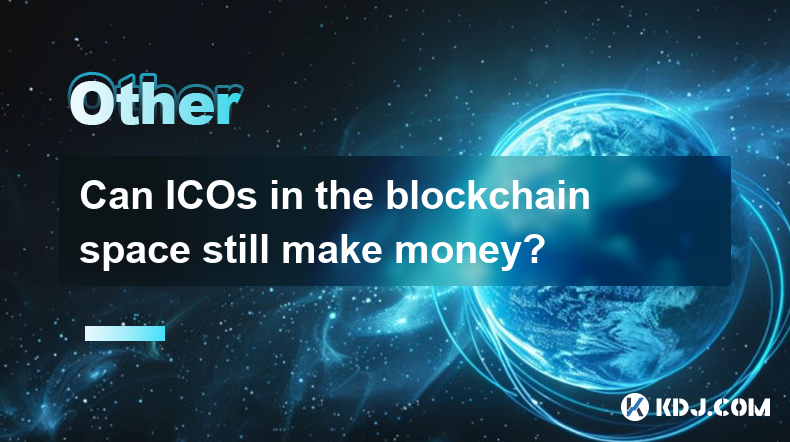
Can ICOs in the blockchain space still make money?
Apr 17,2025 at 08:29pm
The landscape of Initial Coin Offerings (ICOs) in the blockchain space has evolved significantly since their peak in 2017 and 2018. Despite the increased regulatory scrutiny and the rise of alternative fundraising methods like Security Token Offerings (STOs) and Initial Exchange Offerings (IEOs), ICOs can still be a viable way to raise funds and generat...

Can the application of blockchain in supply chain finance bring benefits?
Apr 15,2025 at 04:00pm
Can the application of blockchain in supply chain finance bring benefits? The integration of blockchain technology into supply chain finance has garnered significant attention in the cryptocurrency and financial sectors. This article explores how blockchain can potentially revolutionize supply chain finance, detailing its benefits and providing a compre...
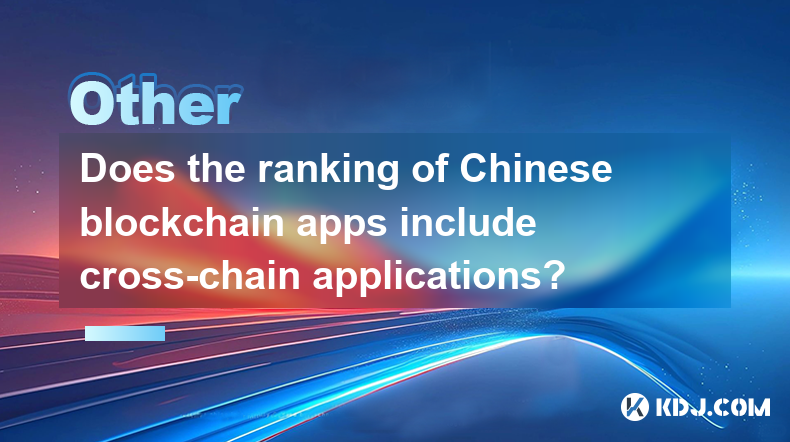
Does the ranking of Chinese blockchain apps include cross-chain applications?
Apr 14,2025 at 04:00pm
The ranking of Chinese blockchain apps is a comprehensive evaluation that takes into account various aspects such as user base, transaction volume, and technological innovation. A pertinent question arises regarding whether these rankings include cross-chain applications. Cross-chain applications, which allow different blockchain networks to interact an...
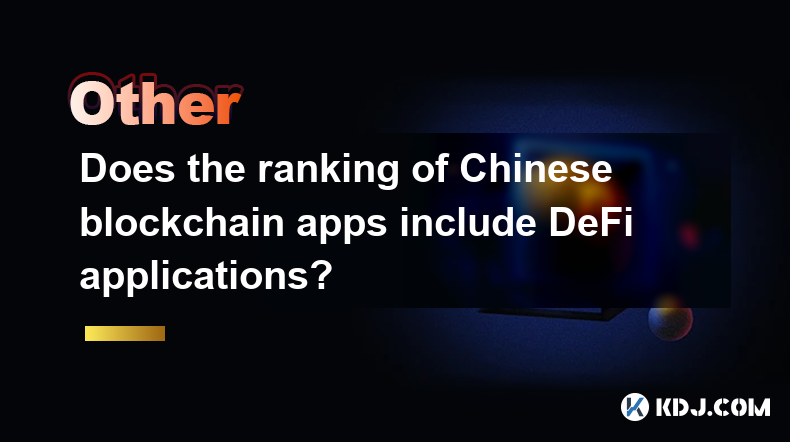
Does the ranking of Chinese blockchain apps include DeFi applications?
Apr 15,2025 at 06:57am
The ranking of Chinese blockchain apps is a comprehensive list that showcases the most popular and influential applications within the cryptocurrency ecosystem. One question that often arises is whether these rankings include DeFi applications. To answer this, we need to delve into the specifics of how these rankings are compiled and what types of appli...
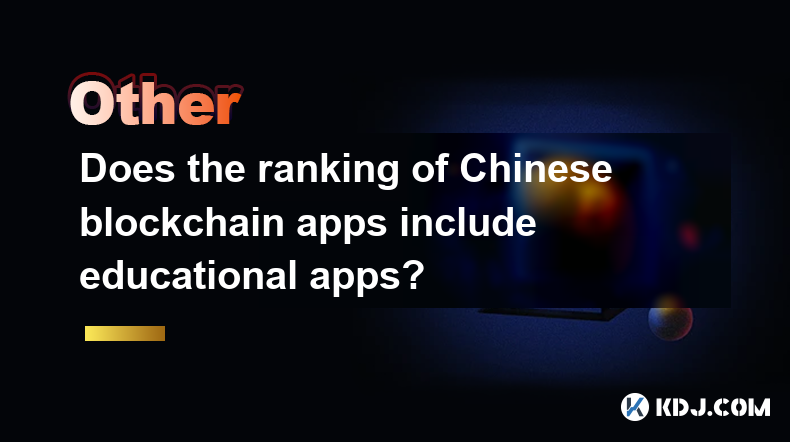
Does the ranking of Chinese blockchain apps include educational apps?
Apr 16,2025 at 03:35am
The ranking of Chinese blockchain apps often includes a variety of categories, from finance and gaming to social networking and beyond. One question that frequently arises is whether these rankings include educational apps. To address this, we need to delve into the specifics of how blockchain apps are categorized and ranked in China, and whether educat...
Does the ranking of Chinese blockchain apps include enterprise-level applications?
Apr 15,2025 at 06:42am
The ranking of Chinese blockchain apps often includes a variety of applications, ranging from consumer-focused to enterprise-level solutions. Understanding the scope and criteria for these rankings is essential to determine if enterprise-level applications are included. This article delves into the specifics of how Chinese blockchain app rankings are co...

Can ICOs in the blockchain space still make money?
Apr 17,2025 at 08:29pm
The landscape of Initial Coin Offerings (ICOs) in the blockchain space has evolved significantly since their peak in 2017 and 2018. Despite the increased regulatory scrutiny and the rise of alternative fundraising methods like Security Token Offerings (STOs) and Initial Exchange Offerings (IEOs), ICOs can still be a viable way to raise funds and generat...

Can the application of blockchain in supply chain finance bring benefits?
Apr 15,2025 at 04:00pm
Can the application of blockchain in supply chain finance bring benefits? The integration of blockchain technology into supply chain finance has garnered significant attention in the cryptocurrency and financial sectors. This article explores how blockchain can potentially revolutionize supply chain finance, detailing its benefits and providing a compre...

Does the ranking of Chinese blockchain apps include cross-chain applications?
Apr 14,2025 at 04:00pm
The ranking of Chinese blockchain apps is a comprehensive evaluation that takes into account various aspects such as user base, transaction volume, and technological innovation. A pertinent question arises regarding whether these rankings include cross-chain applications. Cross-chain applications, which allow different blockchain networks to interact an...

Does the ranking of Chinese blockchain apps include DeFi applications?
Apr 15,2025 at 06:57am
The ranking of Chinese blockchain apps is a comprehensive list that showcases the most popular and influential applications within the cryptocurrency ecosystem. One question that often arises is whether these rankings include DeFi applications. To answer this, we need to delve into the specifics of how these rankings are compiled and what types of appli...

Does the ranking of Chinese blockchain apps include educational apps?
Apr 16,2025 at 03:35am
The ranking of Chinese blockchain apps often includes a variety of categories, from finance and gaming to social networking and beyond. One question that frequently arises is whether these rankings include educational apps. To address this, we need to delve into the specifics of how blockchain apps are categorized and ranked in China, and whether educat...

Does the ranking of Chinese blockchain apps include enterprise-level applications?
Apr 15,2025 at 06:42am
The ranking of Chinese blockchain apps often includes a variety of applications, ranging from consumer-focused to enterprise-level solutions. Understanding the scope and criteria for these rankings is essential to determine if enterprise-level applications are included. This article delves into the specifics of how Chinese blockchain app rankings are co...
See all articles
























































































